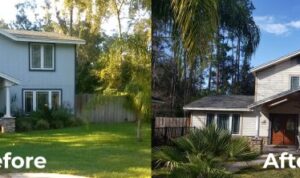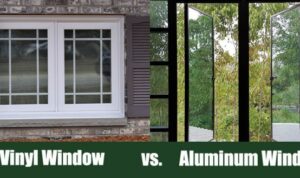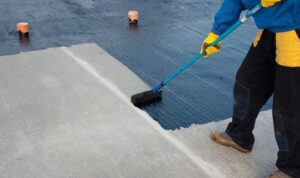When it comes to dealing with the aftermath of a fire, having access to reliable fire damage restoration services is crucial. From assessing the damage to restoring the property, these services play a vital role in helping individuals and businesses recover from such a devastating event.
Let's delve into the world of fire damage restoration services and explore the key aspects that make them essential in times of need.
Introduction to Fire Damage Restoration Services
Fire damage restoration services are essential for restoring properties that have been affected by fire incidents. These services encompass a range of processes aimed at repairing, cleaning, and restoring the property to its pre-fire condition.
The Process of Fire Damage Restoration
Upon being called to a fire-damaged property, restoration professionals assess the extent of the damage and create a plan for restoration. This plan typically involves removing debris, cleaning up soot and smoke residue, repairing structural damage, and restoring the property to a safe and habitable state.
Specialized equipment and techniques are often used to ensure thorough restoration.
Challenges Faced During Fire Damage Restoration
- Smoke and Soot Removal: Smoke and soot can permeate various surfaces, making them difficult to clean and remove. Specialized cleaning techniques are required to eliminate these residues effectively.
- Structural Damage: Fire can weaken the structure of a building, compromising its integrity and safety. Restoration professionals need to assess and repair structural damage to ensure the property is structurally sound.
- Water Damage: Water used to extinguish the fire can cause additional damage to the property. Dealing with water damage alongside fire damage restoration poses a significant challenge that restoration professionals must address.
- Odor Removal: Lingering smoke odors can persist even after visible damage has been addressed. Restoration experts employ various deodorization techniques to eliminate unpleasant odors and improve indoor air quality.
Assessment and Evaluation
After a fire incident, the initial assessment is crucial to determine the extent of damage and develop a restoration plan. Professionals follow specific steps to evaluate the situation accurately.
Initial Assessment Steps
During the initial assessment, professionals will inspect the affected areas to assess the severity of the fire damage. They will look for visible signs of damage, such as charring, soot deposits, and smoke odor. Additionally, they will check for structural damage and assess the safety of the building.
Extent of Fire Damage Evaluation
To evaluate the extent of fire damage, professionals use specialized tools and techniques. This may include thermal imaging cameras to detect hidden hot spots, moisture meters to assess water damage from firefighting efforts, and air quality testing to identify potential health hazards.
By conducting a thorough evaluation, professionals can create a detailed report outlining the scope of work needed for restoration.
Importance of Thorough Evaluation
A thorough evaluation is essential for planning effective restoration efforts. It helps professionals determine the best course of action, prioritize tasks, and estimate the time and resources required for the restoration process. By understanding the full extent of the damage, professionals can ensure that all necessary repairs and cleaning are carried out to restore the property to its pre-fire condition.
Restoration Process
When it comes to fire damage restoration, the process involves several crucial steps to ensure the property is restored to its pre-fire condition. From initial assessment to final cleanup, each phase plays a vital role in the restoration process.
Assessment and Planning
- Upon arrival, professionals assess the extent of the fire damage and create a detailed restoration plan.
- They identify salvageable items, prioritize areas for cleanup, and determine the best approach for restoration.
Cleaning and Repair
- Specialized techniques such as dry cleaning, wet cleaning, and soot removal are used to clean surfaces and items affected by smoke and soot.
- Repairs are made to damaged structures, including walls, floors, and ceilings, to ensure structural integrity is restored.
Deodorization and Sanitization
- Professional-grade deodorization methods are employed to eliminate smoke odors from the property.
- Sanitization processes are carried out to remove any remaining contaminants and ensure a safe environment for occupants.
Final Inspection and Restoration Completion
- Once all repairs and cleaning are completed, a final inspection is conducted to ensure the property meets restoration standards.
- The restoration process is considered complete when the property is deemed safe, clean, and fully restored to its pre-fire condition.
Equipment and Tools

When it comes to fire damage restoration, having the right equipment and tools is crucial for a successful restoration process. These tools are designed to help professionals effectively clean and repair the damage caused by fire. Let's take a look at some of the essential equipment and tools used in fire damage restoration:
Essential Equipment and Tools
- Fire Damage Restoration Vacuum: This specialized vacuum is designed to remove soot, ash, and other debris from surfaces affected by fire. It helps clean up the area and prepare it for restoration.
- Ozone Generators: Ozone generators are used to eliminate smoke odors that may linger after a fire. These machines work by producing ozone, which helps neutralize the odors and purify the air.
- Air Scrubbers: Air scrubbers are essential for improving indoor air quality during the restoration process. They help remove contaminants, dust, and particles from the air, making the environment safer for occupants.
- Thermal Imaging Cameras: These cameras are used to detect hidden pockets of moisture within walls and ceilings. By identifying these moisture areas, professionals can prevent mold growth and further damage.
- Dehumidifiers: Dehumidifiers are used to reduce the humidity levels in the affected area, helping to dry out wet materials and prevent mold growth. They are crucial in the restoration process to ensure thorough drying.
Advanced Technology in Fire Damage Restoration
Advanced technology has revolutionized the fire damage restoration industry, making the process more efficient and effective
Overall, the integration of advanced technology in fire damage restoration practices has enhanced the quality of work and expedited the restoration process.
Health and Safety Considerations
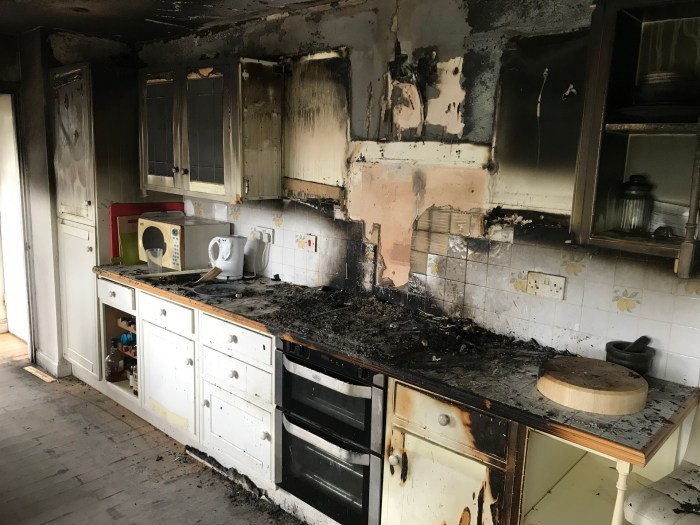
When it comes to fire damage restoration, the safety and well-being of both the restoration professionals and the occupants of the property are of utmost importance. Identifying potential health hazards, following safety protocols, and wearing personal protective equipment (PPE) are crucial aspects of ensuring a safe and successful restoration process.
Potential Health Hazards
- Soot and smoke residue can contain harmful chemicals and carcinogens that pose respiratory risks when inhaled.
- Mold growth can occur within 24-48 hours of water damage from firefighting efforts, leading to potential respiratory issues.
- Structural damage and debris can create physical hazards, increasing the risk of injuries.
Safety Protocols
- Restoration professionals follow strict safety protocols to mitigate risks and ensure a safe working environment.
- Proper ventilation is essential to reduce exposure to harmful fumes and improve air quality during the restoration process.
- Electrical hazards are addressed by turning off power sources and ensuring electrical systems are safe to work around.
Importance of PPE
- Wearing personal protective equipment (PPE) such as gloves, masks, goggles, and coveralls is essential to protect against exposure to hazardous materials.
- PPE helps prevent skin contact with chemicals, respiratory issues from inhaling contaminants, and eye injuries from debris.
- Proper disposal of PPE after use is crucial to prevent contamination and ensure the safety of all individuals involved in the restoration process.
Insurance and Documentation
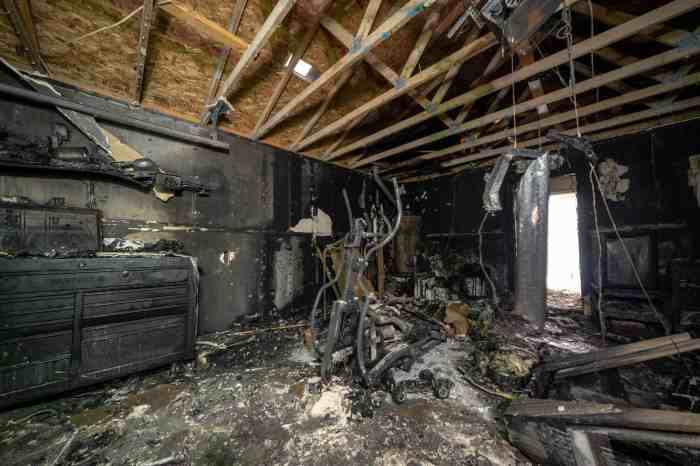
When it comes to fire damage restoration, insurance plays a crucial role in covering the costs associated with the restoration process. It is essential for homeowners to understand how insurance can help in such situations and the importance of proper documentation for insurance claims.
Role of Insurance
Insurance coverage for fire damage restoration can vary depending on the policy and the extent of the damage. Generally, homeowners' insurance policies include coverage for fire damage, which can help cover the costs of restoration, repairs, and replacements. It is important to review your policy to understand the specific coverage and limitations in place.
Importance of Documentation
Documenting the restoration process is vital for insurance claims. Detailed documentation, including before and after photos, itemized lists of damaged items, receipts for repairs and replacements, and communication with restoration professionals, can help support your insurance claim. Make sure to keep all documentation organized and easily accessible.
Tips for Communication with Insurance Companies
- Contact your insurance company as soon as possible to report the fire damage and start the claims process.
- Keep detailed records of all communication with the insurance company, including phone calls, emails, and letters.
- Be honest and accurate when providing information to the insurance company to avoid any delays or complications in the claims process.
- Ask questions and seek clarification if you do not understand any aspect of the insurance policy or the claims process.
- Work closely with your restoration professionals to provide the necessary documentation and information to support your insurance claim.
Preventative Measures
Preventing fire damage in residential and commercial properties is crucial for the safety of occupants and the protection of valuable assets. By implementing effective preventative measures, property owners can reduce the risk of fires and minimize potential damages.
Importance of Fire Safety Plans and Regular Inspections
Developing and implementing a comprehensive fire safety plan is essential for preventing fires in buildings. This plan should include emergency procedures, evacuation routes, fire extinguisher locations, and designated meeting points. Regular inspections of fire safety equipment, such as smoke detectors, fire alarms, and sprinkler systems, should be conducted to ensure they are in working condition.
Tips for Maintaining Fire Safety After Restoration
- Regularly test smoke detectors and replace batteries as needed.
- Keep flammable materials away from heat sources and electrical outlets.
- Avoid overloading electrical circuits and use surge protectors to prevent electrical fires.
- Dispose of ashes and cigarette butts properly in designated containers.
- Educate occupants on fire safety practices and conduct fire drills regularly.
Final Thoughts
As we wrap up our discussion on fire damage restoration services, it's clear that these services are not just about fixing physical damage. They provide a sense of hope and renewal for those affected by fire incidents, allowing them to rebuild and move forward.
By understanding the process, equipment involved, safety considerations, and preventative measures, individuals and businesses can better prepare for any unforeseen events.
User Queries
What are the common challenges faced during fire damage restoration?
Challenges can include dealing with smoke odor, soot removal, structural damage assessment, and navigating insurance claims.
How do professionals evaluate the extent of fire damage?
Professionals use a combination of visual inspection, testing equipment, and experience to assess the full extent of fire damage.
Why is wearing personal protective equipment (PPE) important during restoration work?
PPE helps protect restoration professionals from exposure to harmful substances and ensures their safety during cleanup and restoration tasks.


